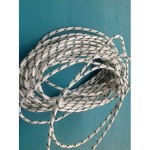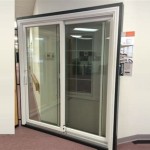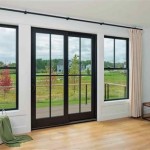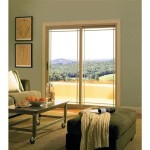The Enduring Appeal of Vintage Patio Furniture
Vintage patio furniture evokes a sense of nostalgia and timeless elegance, representing a bygone era of leisurely outdoor living. Beyond mere functionality, these pieces often represent craftsmanship, design innovation, and social history. Investing in vintage patio furniture not only adds character to outdoor spaces but also provides a sustainable alternative to mass-produced, contemporary options. This article explores the characteristics, classifications, and considerations associated with acquiring and maintaining vintage patio furniture.
Understanding the Characteristics of Vintage Patio Furniture
Vintage patio furniture is characterized by its age, materials, design, and construction techniques. Generally, items considered vintage are at least 20 years old and often exhibit features distinctive from contemporary furniture. Examining these defining characteristics allows for improved identification and assessment of value.
One of the most defining characteristics is the materials used. Wrought iron was particularly popular from the late 19th century through the mid-20th century. Its durability and ability to be shaped into ornate designs contributed to its widespread use. Cast aluminum also gained prominence, offering a lighter-weight alternative to iron while still maintaining weather resistance. Wood, particularly teak and redwood, was frequently utilized for its natural beauty and resistance to decay. Rattan and wicker were commonly used for seating surfaces and decorative elements, providing comfort and textural interest. The choice of materials reflected the prevailing aesthetic sensibilities and technological advancements of each era.
Design styles also vary considerably depending on the period. Art Deco designs, popular in the 1920s and 1930s, featured geometric shapes and streamlined silhouettes. Mid-century modern designs, prevalent in the 1950s and 1960s, emphasized clean lines, organic forms, and the use of new materials such as molded plastic. Victorian-era furniture, dating back to the late 19th and early 20th centuries, often incorporated intricate scrollwork, floral motifs, and ornate detailing. Recognizing design styles helps accurately date and contextualize vintage pieces.
Construction methods employed in vintage patio furniture also differ from modern techniques. Wrought iron furniture was often hand-forged, resulting in unique variations and superior strength. Cast aluminum pieces were typically produced using sand casting, a process that allowed for intricate designs but could also result in imperfections. Wooden furniture was often assembled using mortise-and-tenon joints or dovetail joints, demonstrating a high level of craftsmanship. The quality of construction is a key indicator of durability and longevity.
Finally, the patina and wear acquired over time contribute to the unique character of vintage patio furniture. Rust on iron, weathering on wood, and fading on fabrics tell a story of past use and exposure to the elements. While excessive damage can detract from value, a certain amount of wear can enhance the authenticity and appeal of a piece. Preserving the original patina while ensuring structural integrity is a delicate balance.
Classifying Vintage Patio Furniture by Era and Style
Classifying vintage patio furniture by era and style provides a framework for understanding its historical context and design evolution. Recognizing distinct periods and their associated design aesthetics helps collectors and enthusiasts appreciate the nuances of each piece.
Victorian-era patio furniture, spanning roughly from the mid-19th century to the early 20th century, is characterized by its ornate detailing and romantic aesthetic. Wrought iron was the dominant material, often shaped into intricate scrollwork, floral motifs, and curvilinear forms. Colors were typically dark, reflecting the somber mood of the era. Seating surfaces were often made of woven wire or caning. This style evokes a sense of elegance and formality, reminiscent of grand estates and garden parties.
Art Deco patio furniture, popular from the 1920s to the 1940s, embraces geometric shapes, streamlined silhouettes, and luxurious materials. Wrought iron and cast aluminum were commonly used, often finished with a glossy black or chrome finish. Designs often incorporated stylized sunbursts, zigzags, and other geometric patterns. Seating surfaces might be upholstered in durable canvas or leatherette. This style reflects the optimism and modernity of the interwar period.
Mid-century modern patio furniture, prevalent from the 1950s to the 1970s, emphasizes clean lines, organic forms, and the use of new materials. Tubular steel, aluminum, and molded plastic were commonly used, often in bright, vibrant colors. Designs often incorporated geometric patterns and abstract shapes. Seating surfaces were frequently made of vinyl or woven plastic straps. This style reflects the post-war optimism and the embrace of technological innovation.
Another notable style is the rustic or Adirondack style, which features furniture made from unfinished wood, often with a natural or stained finish. Adirondack chairs, characterized by their slanted backs and wide armrests, are a quintessential example of this style. This style evokes a sense of informality and connection to nature.
Identifying the era and style of vintage patio furniture requires careful observation of its materials, design details, and construction techniques. Reference books, online resources, and expert consultations can aid in this process. Understanding the historical context of each piece enhances its appreciation and value.
Considerations for Acquiring and Maintaining Vintage Patio Furniture
Acquiring and maintaining vintage patio furniture requires careful consideration of condition, authenticity, restoration, and preservation. Understanding these factors ensures that vintage pieces retain their value and aesthetic appeal for years to come.
Assessing the condition of vintage patio furniture is crucial before purchase. Examine the frame for signs of rust, corrosion, or structural damage. Inspect wooden components for rot, warping, or insect infestation. Check seating surfaces for tears, stains, or sagging. Evaluate the finish for chipping, fading, or peeling. Minor imperfections are to be expected in vintage items, but excessive damage can be costly to repair or restore. A thorough inspection helps determine the overall value and potential restoration needs.
Verifying the authenticity of vintage patio furniture is important for collectors and those seeking to invest in genuine pieces. Look for manufacturer's marks, labels, or stamps that can identify the maker and date of production. Research the history of the manufacturer and the design of the piece to confirm its authenticity. Be wary of reproductions or pieces that have been heavily modified or misrepresented. Consulting with experts or appraisers can help authenticate valuable or rare items.
Restoration involves repairing or refinishing vintage patio furniture to restore it to its original condition. This may involve removing rust, repairing damaged wood, replacing upholstery, or reapplying a protective finish. It is important to use appropriate materials and techniques that are consistent with the original construction of the piece. Over-restoring can detract from the value of vintage items, so it is often best to preserve as much of the original character as possible. Professional restorers can provide expert guidance and craftsmanship.
Preservation focuses on maintaining vintage patio furniture in its current condition to prevent further deterioration. This includes regular cleaning, protecting from the elements, and storing properly during the off-season. Use mild soap and water to clean surfaces, avoiding harsh chemicals or abrasive cleaners. Apply a protective coating of wax or sealant to wooden components. Cover or store furniture indoors during periods of inclement weather. Proper preservation helps extend the lifespan and maintain the value of vintage patio furniture.
Finally, consider the intended use of the furniture. Will it be used for daily seating, occasional entertaining, or simply as decorative pieces? The level of wear and tear the furniture will be subjected to should influence the purchasing decision. Restoration efforts should take the intended function into account. Furniture used frequently may need sturdier repairs than pieces displayed mostly for aesthetic purposes.
We Ship Vintage Wrought Iron Outdoor Furniture Salterini Woodard

For The Love Of Vintage Lawn Furniture Re Invintage Home

Vintage Pattern Warehouse Patio Furniture Wrought Iron

Vintage Patio Furniture Hong Kong

Retro Metal Patio Chair And Table Makeover Sarah Hearts

Vintage Outdoor Patio Design Explore Luxury Furniture Patioliving
:max_bytes(150000):strip_icc()/Mad-Men-7B-Gallery-Don-Hamm-Roger-Slattery-Pete-Kartheiser-574a1fb05f9b585165312efe.jpg?strip=all)
A Guide To Vintage Patio Furniture

Fancy Flea Market Vintage Outdoor Furniture Patio Metal

Vintage Patio Furniture Hong Kong

Outdoor Furniture Vintage Garden Urns And Access








